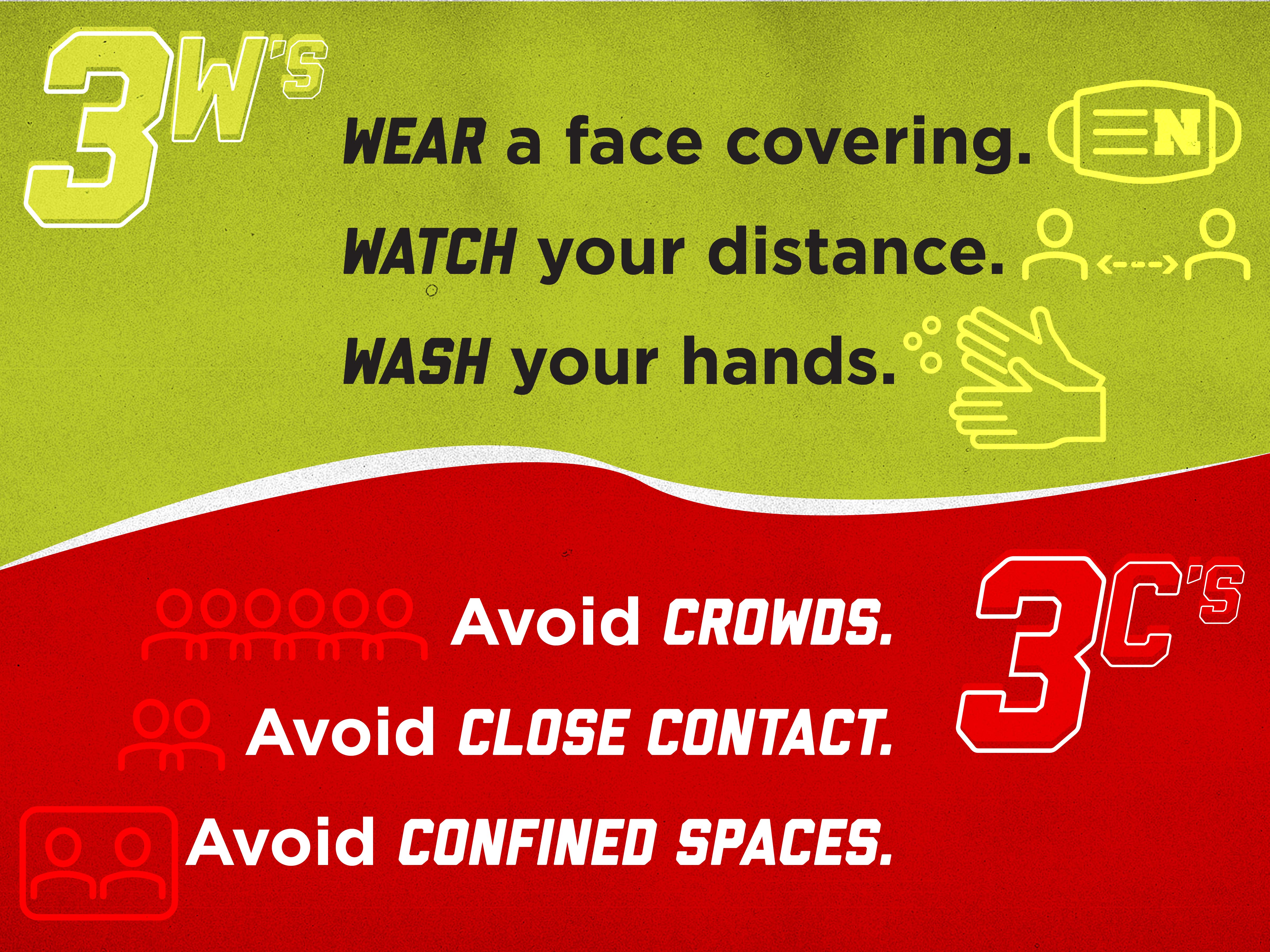Friday, November 6, 2020 Planning for your return home during COVID-19: 3 W’s & 3 C’s

You’re likely looking forward to reconnecting with family and friends during the winter break. However, this year will need to be different to help protect yourself and those around you. Your plan should have 3 W’s: wearing masks, watching your distance, washing your hands and 3 C’s: avoiding crowds, close contact and confined spaces.
Before You Leave
During the two weeks prior to leaving, it’s extremely important to be diligent in your protective practices. You as well as those in your home environment should following the 3 W’s and 3 C’s to prevent illness in your household. If the entire household follows this plan for two weeks prior your return home — and during the first two weeks that you’re home — the risk of COVID-19 transmission in your home will be very low.
- Wear a mask. Always wearing a mask when around anyone that is not from your own household is the number one way to reduce the risk of COVID-19.
- Watch your distance. Avoiding close contact by keeping 6 feet of distance from others who do not live in your home will prevent spread.
- Wash your hands. If washing with soap and water, scrub your hands for at least 20 seconds. If using hand sanitizer, be sure the sanitizer contains at least 60% alcohol.
- Avoid crowds. This means no parties, going to bars and no group events or activities to help create a solid defense against COVID-19.
- Avoid close contact. Again, keep your distance from others.
- Avoid confined spaces. Do not spend time indoors in enclosed spaces with poor ventilation.
When at Home
Socializing will need to look different this year. With each personal interaction potentially increasing the spread of COVID-19, every interaction needs to be thoughtful and intentional. Household members should continue to exercise caution in their socialization to protect one another.
If any family or household member is considered high-risk, typically those who are older adults or have pre-existing medical conditions, all household members should take additional precautions by wearing face coverings and maintaining 6 feet of distance even within the home.
Discuss risk tolerance and what types of activities are acceptable with your household before you arrive. Below are some examples of how to socialize depending on the agreed-upon risk tolerance.
LOW RISK
Embrace digital connections. Hosting a Zoom coffee to catch up with friends or family bears minimal risk. As long as you participate from home by yourself a mask isn’t even necessary!
MORE RISK
Build a bubble. Only get together with only a couple of individuals who you most want to reconnect with during your time at home. Limiting interactions, meeting outdoors, and taking precautions like wearing a face covering and maintaining 6 feet of distance will help prevent virus spread.
HIGHER RISK
Re-enter the home environment. While it may seem most natural to remove masks and not worry about distancing around your household, this carries a higher risk. This risk can be lowered by carefully following the 3 W’s and 3 C’s for two weeks before you come home.
HIGHEST RISK
Attending one-off get-togethers or large gatherings. It may seem difficult to limit interactions if you have a large social circle, but this is key to reducing the risk of transmission of COVID-19. Mixing households and potentially students or individuals from many regions carries an increased likelihood of infection. These types of events are not recommended.
Keep in mind that risk levels are different in each community, and it’s important to familiarize yourself with local conditions and directed health measures to keep yourself and others safe.